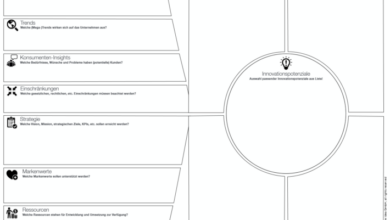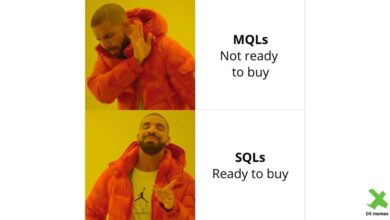
How to Calculate ROAS A Comprehensive Guide
How to calculate ROAS sets the stage for understanding the vital metric for ad campaign success. This guide dives deep into the intricacies of Return on Ad Spend, revealing the formulas, advanced scenarios, and factors influencing its calculation. We’ll explore how to interpret ROAS data effectively, optimize campaigns for improved performance, and understand industry benchmarks.
From basic definitions and formulas to complex scenarios involving multiple products and varying campaign goals, this comprehensive guide will equip you with the knowledge to calculate and interpret ROAS effectively. We’ll cover everything from the core components to optimizing your campaigns for maximum return on investment.
Defining Return on Ad Spend (ROAS)
Return on Ad Spend (ROAS) is a crucial metric in digital marketing that measures the profitability of advertising campaigns. It essentially tells you how much revenue you generate for every dollar spent on advertising. Understanding ROAS is essential for optimizing your marketing budget and ensuring that your advertising efforts are delivering a positive return on investment.ROAS is calculated by dividing the revenue generated from an advertising campaign by the total amount spent on that campaign.
This simple ratio highlights the effectiveness of your advertising strategy and helps you identify areas where you can improve performance. A high ROAS indicates a successful campaign, while a low ROAS suggests potential areas for optimization.
Core Calculation of ROAS
ROAS is a straightforward calculation. It quantifies the revenue generated by an advertising campaign relative to the cost of running that campaign. The core formula is:
ROAS = (Revenue Generated / Cost of Advertising)
The key components involved in this calculation are:
- Revenue Generated: This represents the total income derived directly from the advertising campaign. This includes sales, subscriptions, or any other measurable value generated by the campaign.
- Cost of Advertising: This encompasses all expenses directly related to the advertising campaign, including ad platform fees, creative production costs, and any other associated costs.
Significance of ROAS in Marketing Campaigns
ROAS is vital in marketing campaigns because it allows marketers to evaluate the effectiveness of their advertising strategies. By monitoring ROAS, companies can identify which campaigns are profitable and which ones require adjustments. A high ROAS indicates that the advertising campaign is generating a substantial return for the investment, while a low ROAS signifies a need for optimization.
This data-driven approach enables marketers to make informed decisions regarding budget allocation, ad targeting, and creative messaging. By understanding the ROAS, companies can improve campaign performance and maximize their return on investment.
Illustrative Table: Revenue, Ad Spend, and ROAS
This table demonstrates the relationship between revenue, ad spend, and ROAS.
| Campaign | Revenue Generated ($) | Ad Spend ($) | ROAS |
|---|---|---|---|
| Campaign A | 10,000 | 2,000 | 5.0 |
| Campaign B | 5,000 | 1,000 | 5.0 |
| Campaign C | 2,000 | 500 | 4.0 |
This table clearly shows that Campaign A and Campaign B, despite different revenue figures, achieved the same ROAS of 5.0. Campaign C, while having a lower revenue, shows a slightly lower ROAS of 4.0. The consistent ROAS across campaigns A and B demonstrates the importance of evaluating not just the revenue, but the cost-effectiveness of each campaign.
Calculating ROAS: How To Calculate Roas

Return on Ad Spend (ROAS) is a crucial metric for evaluating the effectiveness of your advertising campaigns. Understanding how to calculate it accurately allows you to optimize your spending and maximize your return. A high ROAS indicates that your advertising efforts are profitable, while a low ROAS signals areas needing improvement. This section delves into the fundamental formula, practical examples, and the manual calculation process.Calculating ROAS is straightforward.
It’s essentially a comparison of revenue generated from advertising against the cost of those ads. The higher the ROAS, the more profitable your advertising strategy is. This allows you to make informed decisions about where to allocate your budget and what channels to prioritize.
Basic Formula
The core formula for calculating ROAS is simple:
ROAS = (Revenue Generated from Ads / Cost of Ads) – 100
This formula essentially divides the total revenue directly attributable to your advertising campaigns by the total cost of those campaigns. The result is expressed as a percentage, indicating the return for every dollar spent on advertising.
ROAS Calculation Examples
Let’s illustrate the ROAS calculation with some practical examples:
- Example 1: If your advertising campaign generated $10,000 in revenue and cost $2,000 to run, your ROAS would be (10,000 / 2,000)
– 100 = 500%. This indicates a highly successful campaign, generating $5 for every $1 spent. - Example 2: Conversely, if your advertising campaign generated $5,000 in revenue and cost $10,000 to run, your ROAS would be (5,000 / 10,000)
– 100 = 50%. While still profitable, this campaign requires optimization to improve the return on investment. - Example 3: A more complex example involves multiple products and varying pricing structures. If an ad campaign generates $20,000 in revenue for product A ($10,000) and product B ($10,000), while the cost of the ad campaign is $5,000, the ROAS would be (20,000 / 5,000)
– 100 = 400%. This example highlights how diverse product offerings can impact overall ROAS.
Manual Calculation Steps
To manually calculate ROAS, follow these steps:
- Identify Revenue: Determine the total revenue generated directly from your advertising campaigns. This revenue should be attributable to the specific advertising efforts, excluding any other revenue streams.
- Determine Ad Spend: Accurately record the total cost associated with running your advertising campaigns. This includes all expenses related to the campaign, such as ad platform fees, creative development, and any associated services.
- Apply the Formula: Use the formula ROAS = (Revenue Generated from Ads / Cost of Ads)
100 to calculate the ROAS percentage.
- Interpret Results: Analyze the calculated ROAS to assess the effectiveness of your advertising strategy. A high ROAS suggests a successful campaign, while a low ROAS may indicate areas for optimization.
Calculating ROAS: How To Calculate Roas
Return on Ad Spend (ROAS) is a crucial metric for evaluating the effectiveness of advertising campaigns. While the basic calculation is straightforward, real-world scenarios often introduce complexities. This section delves into advanced ROAS calculations, addressing situations involving multiple products, varying campaign goals, and diverse data sets. Understanding these nuances is vital for accurate performance analysis and informed decision-making.Calculating ROAS involves more than just a simple formula.
Different advertising campaigns and business models will require tailored approaches to calculating ROAS to ensure accuracy and a realistic assessment of campaign profitability. This section will detail how to adapt ROAS calculations for various circumstances.
ROAS with Multiple Products or Services
Different products or services will often have varying profit margins and conversion rates. A single ROAS figure for an entire campaign might not accurately reflect the performance of individual products or services. To address this, break down your campaign data by product or service. This allows for a more granular analysis, identifying high-performing and low-performing offerings. Track revenue and ad spend for each product or service separately to calculate ROAS for each.
ROAS with Varying Ad Campaign Goals
Not all ad campaigns have the same objectives. Some campaigns might prioritize brand awareness, while others focus on driving immediate sales. When calculating ROAS, consider the campaign’s specific goals. For campaigns focused on lead generation, ROAS might be less relevant than other metrics like cost-per-lead. For sales-driven campaigns, ROAS is a key indicator.
Adjust your calculations accordingly to ensure the metric aligns with the campaign’s intended outcome.
ROAS Calculation Methods Comparison
| Scenario | Calculation Method | Example |
|---|---|---|
| Single Product, Single Campaign Goal (Sales) | Total Revenue / Total Ad Spend | If a campaign generates $10,000 in revenue and costs $2,000 in ad spend, ROAS is 5. |
| Multiple Products, Single Campaign Goal (Sales) | Revenue from each product / Ad spend for each product | If Product A generates $5,000 in revenue and costs $1,000 in ad spend, ROAS is 5. If Product B generates $3,000 in revenue and costs $500 in ad spend, ROAS is 6. |
| Single Product, Multiple Campaign Goals (Sales & Brand Awareness) | Allocate ad spend proportionally to each goal and calculate ROAS for each. | If a campaign has 60% of ad spend for sales and 40% for brand awareness, use the respective percentages of ad spend when calculating ROAS for sales and brand awareness. |
| Multiple Products, Multiple Campaign Goals (Sales & Lead Generation) | Calculate ROAS for each product and each campaign goal separately. | Product A, sales goal: ROAS is 4; Product A, lead generation goal: cost per lead is $
|
Factors Influencing ROAS
Return on Ad Spend (ROAS) is a critical metric for evaluating the effectiveness of advertising campaigns. Understanding the factors that influence ROAS allows businesses to optimize their strategies and maximize profitability. A high ROAS indicates that advertising investments are generating significant returns, while a low ROAS suggests a need for adjustments to the campaign.
Analyzing these factors helps in strategic decision-making and ensures that marketing efforts are aligned with business goals.Several key factors can either boost or hinder your ROAS. Recognizing these influences is crucial for effective campaign management and maximizing your return on investment. A deep understanding of these factors allows for targeted adjustments and improved performance.
Figuring out your Return on Ad Spend (ROAS) is key to understanding ad campaign effectiveness. Knowing how to maximize your online ad spend is crucial to get the most out of your budget, and that directly ties into calculating ROAS accurately. A solid grasp of how to maximize online advertising dollars is fundamental to ensuring that your ROAS calculations are useful and lead to smarter ad strategies.
This means understanding the connection between your campaign goals and the metrics you’re tracking, so your ROAS calculations are precise and actionable.
Positive Factors Impacting ROAS
Effective targeting strategies are essential for maximizing ROAS. Precisely identifying your ideal customer profile allows for more focused advertising efforts. This targeted approach ensures that your ads reach the right people, increasing the likelihood of conversions and ultimately boosting ROAS. For example, using demographic data, interests, and behaviors to narrow down your audience leads to a higher conversion rate.High-quality ad creatives are another crucial element.
Visually appealing and engaging ad copy that effectively communicates your value proposition are vital for capturing attention and driving conversions. Compelling visuals and clear messaging encourage clicks and ultimately translate into sales, resulting in a higher ROAS. For instance, well-designed landing pages that match the ad’s promise can significantly improve conversion rates.Optimized ad copy is paramount. The words you use in your ad campaigns significantly impact how your target audience perceives your offering.
Compelling and persuasive language that highlights the unique selling proposition (USP) of your product or service is essential for driving conversions. For example, using strong calls to action (CTAs) like “Shop Now” or “Learn More” can encourage immediate engagement and lead to increased sales.
Negative Factors Impacting ROAS
Poorly defined target audiences lead to wasted ad spend. When your ads aren’t reaching the right people, the conversion rate decreases, resulting in a lower ROAS. For instance, targeting too broad of an audience can result in a substantial portion of your ad budget being wasted on irrelevant clicks.Ineffective ad creatives can significantly decrease ROAS. If your ads aren’t engaging or don’t effectively communicate the value proposition of your product or service, they won’t resonate with your target audience.
Poor visuals or confusing messaging can lead to low click-through rates and decreased conversions.Inconsistent ad copy and a lack of clear messaging can hinder ROAS. If your ads don’t clearly communicate your value proposition or don’t use strong calls to action, they won’t effectively drive conversions. For instance, using generic or vague language can lead to a lack of engagement and decreased conversions.
Correlation Between Marketing Strategies and ROAS, How to calculate roas
Different marketing strategies can have varying impacts on ROAS. A strategic approach to marketing campaigns is essential to ensure that the chosen strategies are aligned with the goals and objectives of the business. The effectiveness of marketing strategies in achieving desired ROAS depends on several factors, including the target audience, the specific marketing channel, and the overall marketing strategy.
| Marketing Strategy | Potential Impact on ROAS |
|---|---|
| Search Engine Marketing (SEM) | High potential for a good ROAS with targeted s and optimized campaigns. |
| Social Media Marketing | Moderate to high ROAS depending on the platform and targeting. |
| Content Marketing | Lower ROAS initially, but can lead to high ROAS over time through organic traffic and brand building. |
| Email Marketing | Moderate to high ROAS with segmented lists and personalized campaigns. |
| Influencer Marketing | High potential for ROAS if the influencers align with the target audience and brand. |
Interpreting ROAS Data

Understanding your Return on Ad Spend (ROAS) is crucial for optimizing your advertising campaigns. Interpreting ROAS data effectively involves more than just looking at the numbers; it’s about identifying trends, pinpointing areas for improvement, and making data-driven decisions. This section will delve into the nuances of ROAS analysis, helping you transform raw data into actionable insights.
Analyzing ROAS Trends Over Time
Consistent tracking of ROAS trends over time is vital for understanding campaign performance and identifying patterns. Visual representations like line graphs or charts are highly effective tools for visualizing these trends. By plotting ROAS against time, you can easily spot upward or downward movements, seasonal fluctuations, or any sudden changes. These visualizations help to quickly grasp the overall performance trajectory of your campaigns.
For instance, a consistently increasing ROAS suggests that your campaigns are becoming more efficient, while a downward trend might signal the need for adjustments to your strategy.
Identifying Areas for Improvement
Analyzing ROAS data allows for the identification of specific areas needing improvement within your advertising campaigns. This involves a deep dive into the different elements of your campaign, such as ad copy, targeting, bidding strategies, and landing pages. A lower-than-expected ROAS might be indicative of issues with ad relevance, poor targeting, or ineffective landing pages. Careful examination of these elements allows for informed adjustments and improvements to your campaign.
Calculating ROAS, or Return on Ad Spend, is crucial for any marketing campaign. It’s simply your revenue divided by your ad spend. A great example of someone nailing this is Leslie Ferraro, CMO at Hershey Entertainment Resorts, who clearly understands the importance of maximizing returns. Understanding this metric is key to optimizing your budget and ensuring your marketing efforts are profitable.
It’s all about making sure every dollar you spend on ads generates a positive return.
For example, if ROAS for mobile ads is consistently lower than desktop ads, it could indicate a need for optimizing mobile landing pages or targeting.
ROAS Thresholds and Implications
The following table provides a range of ROAS thresholds and their associated implications for your campaigns:
| ROAS | Implications |
|---|---|
| > 5 | Excellent performance. Campaign is highly efficient and likely exceeding expectations. Focus on maintaining this performance or exploring ways to further optimize. |
| 3-5 | Good performance. Campaign is profitable and achieving expected results. Monitor trends and identify opportunities for improvement. |
| 1-3 | Moderate performance. Campaign is generating revenue but potentially not reaching its full potential. Explore strategies to increase conversion rates or reduce ad spend. |
| < 1 | Poor performance. Campaign is losing money. Immediate action is required to analyze the cause and implement changes. Consider pausing or restructuring the campaign. |
Understanding the implications associated with different ROAS levels allows you to make proactive adjustments and optimize your campaigns for greater success.
Optimizing ROAS
Reaching maximum return on ad spend (ROAS) is a constant pursuit for marketers. Understanding how to optimize your campaigns is crucial for sustainable growth and profitability. This involves not just setting up effective campaigns, but continuously analyzing data, adapting strategies, and refining your approach based on real-time performance.Effective ROAS optimization hinges on a data-driven approach. It requires a deep dive into campaign performance metrics, identifying areas for improvement, and making informed adjustments to ad spend and targeting.
By understanding the interplay between different variables and their impact on ROAS, you can fine-tune your campaigns for optimal results.
Ad Spend Adjustment Strategies
Understanding the correlation between ad spend and ROAS is paramount. While increasing spend might initially seem like a straightforward path to higher ROAS, it’s not always the case. Overspending can dilute your return, while under-spending may limit your potential reach. A thoughtful and data-driven approach to adjusting ad spend is essential.
- Progressive Spend Optimization: Gradually increase your ad spend on high-performing campaigns while reducing it for underperforming ones. This allows you to allocate resources more efficiently, maximizing the ROI from your campaigns.
- Budget Allocation based on Conversions: Prioritize campaigns that generate the highest conversion rates and allocate a larger budget to them. This strategy focuses on maximizing the return on the most successful campaigns.
- A/B Testing Ad Spend: Experiment with different ad spend levels for similar campaigns. This data-driven approach allows you to discover the optimal spend level that delivers the best ROAS for each campaign.
Targeting Optimization Strategies
Refining your targeting parameters is crucial for maximizing ROAS. The more precise your targeting, the higher the likelihood of reaching the right audience and generating conversions.
- Audience Segmentation Refinement: Analyze conversion data to identify the most valuable audience segments. Adjust your targeting to prioritize these segments and exclude those that don’t yield positive returns. For example, if you notice a specific demographic is converting at a higher rate, you might allocate more budget to campaigns targeting that audience.
- Interest-Based Targeting Adjustments: Track conversion rates across different interest-based targeting categories. Optimize targeting by allocating more resources to interest categories that yield higher conversion rates and reducing spend on less effective categories.
- Location-Based Targeting Adjustments: Analyze conversion rates across different geographic locations. Prioritize locations that generate the highest ROAS and scale spend accordingly. This could involve adjusting ad placement to concentrate on higher-converting regions.
Ad Platform Optimization Strategies
Different ad platforms have unique optimization tools and strategies. Understanding these nuances is key to maximizing ROAS across various platforms.
- Google Ads Optimization: Leverage Google Ads’ advanced targeting options, such as audience segmentation and remarketing, to refine your campaigns. Use Google Ads’ conversion tracking to identify high-performing s and adjust your bidding strategy accordingly. Experiment with different bidding strategies, such as maximizing conversions or target CPA, to discover the optimal approach for your budget and goals.
- Facebook Ads Optimization: Utilize Facebook’s detailed targeting options, including interests, demographics, and behaviors. Implement A/B testing on different ad creatives and ad copy to identify high-performing variations. Use Facebook’s conversion tracking to understand which ads generate the best results and optimize accordingly.
- Bing Ads Optimization: Analyze Bing Ads data to understand which s and ad copy generate the highest click-through rates (CTR) and conversions. Focus on optimizing landing pages to improve conversion rates and make adjustments based on campaign performance metrics.
A/B Testing Examples
A structured approach to A/B testing can significantly improve ROAS. Testing different elements of your campaigns, such as ad creatives, ad copy, landing pages, and targeting parameters, allows you to identify what resonates best with your target audience.
| Test Variable | Variation A | Variation B | Metric to Measure |
|---|---|---|---|
| Ad Creative (Image) | Image of product with a testimonial | Image of product with a price comparison | Click-through rate (CTR), Conversion rate |
| Ad Copy | Focus on product benefits | Focus on problem solution | CTR, Conversion rate, Average order value |
| Landing Page | Simple landing page | Landing page with multiple calls to action | Conversion rate, Bounce rate |
ROAS Benchmarks and Industry Standards
Knowing your Return on Ad Spend (ROAS) is crucial, but understanding where your numbers fall within the industry landscape is equally important. Benchmarking against industry standards helps you assess your campaign’s effectiveness and identify areas for improvement. A high ROAS isn’t always the goal; it’s about achieving a ROAS that aligns with your business objectives and the realities of your chosen industry.
Calculating Return on Ad Spend (ROAS) is crucial for any marketing campaign. Divide your revenue by your ad spend to get your ROAS. This is particularly important when using Facebook retargeting, facebook retargeting , to re-engage potential customers. You need to track your ad spend and revenue closely for accurate ROAS calculations, regardless of the channel you are using.
Common ROAS Benchmarks Across Industries
Different industries have different profit margins and customer acquisition costs. Therefore, a single ROAS benchmark doesn’t fit all. For example, a high-value, luxury product might have a lower ROAS than a low-value product sold in high volume.
ROAS Benchmarks for Specific Products/Services
Understanding ROAS benchmarks for specific product categories or services allows for a more nuanced evaluation. Let’s explore some examples. E-commerce businesses selling apparel often see ROAS benchmarks in the range of 2-5x. For example, a clothing company with a 3x ROAS is doing well compared to industry averages, but they could still have room for improvement. On the other hand, SaaS companies often have lower ROAS benchmarks, potentially ranging from 1 to 2x.
A SaaS company with a 2x ROAS might be on track, given the intricacies of long-term customer acquisition.
Interpreting Industry Benchmarks in the Context of a Company’s Performance
Benchmarking isn’t a one-size-fits-all approach. A company’s specific ROAS should be interpreted in the context of its unique circumstances. Factors like pricing strategy, marketing channels, customer acquisition cost, and product complexity all influence ROAS. For instance, a company with a higher customer acquisition cost might need a higher ROAS to achieve profitability.
Table of Industry ROAS Benchmarks and Potential Implications
This table provides a general overview of ROAS benchmarks across different industries. It’s crucial to remember that these are just averages and your specific ROAS might fall outside these ranges. Consider these benchmarks as a starting point for analysis.
| Industry | Typical ROAS Range | Potential Implications |
|---|---|---|
| E-commerce (Apparel) | 2x – 5x | A ROAS below 2x might indicate the need for adjustments to pricing, marketing, or product strategy. A ROAS above 5x suggests exceptional efficiency in acquiring customers. |
| SaaS | 1x – 2x | A ROAS below 1x could signal a need to re-evaluate pricing, marketing, or sales strategies. A ROAS above 2x suggests effective strategies for acquiring high-value customers. |
| Financial Services | 3x – 7x | A ROAS significantly below 3x might indicate a need for refinement in marketing campaigns, targeting, and customer acquisition methods. A ROAS above 7x might point to exceptional strategies. |
| Travel | 2x – 4x | A ROAS below 2x may require adjustments to advertising or targeting. A ROAS above 4x signifies a well-optimized campaign. |
Practical Application Examples
Understanding Return on Ad Spend (ROAS) is crucial, but its true value shines when applied in real-world scenarios. This section dives into practical examples, highlighting the importance of considering various factors and demonstrating successful ROAS optimization. From e-commerce businesses to SaaS companies, ROAS plays a vital role in maximizing ad campaign effectiveness.
E-commerce Example: Online Shoe Store
A popular online shoe store ran a Facebook ad campaign targeting women aged 25-40 interested in athletic shoes. They tracked the following key metrics:
- Cost per click (CPC): $2.50
- Conversion rate: 3%
- Average order value (AOV): $100
Using the formula ROAS = (Revenue per click / Cost per click), they calculated their ROAS.
ROAS = ($3 / $2.50) = 1.2
This ROAS of 1.2 indicates that for every $1 spent on ads, they generated $1.20 in revenue. While this might seem low, the store’s initial target was to increase brand awareness, which, in the long run, led to higher conversion rates and a significant increase in revenue.
SaaS Example: Software-as-a-Service Company
A SaaS company promoting a project management tool utilized Google Ads to target potential clients. They calculated the following metrics:
- Cost per lead (CPL): $50
- Average customer lifetime value (CLTV): $500
- Conversion rate: 2%
To determine the ROAS, they needed to consider the conversion from lead to paying customer. If 2% of leads convert to paying customers, the revenue per lead is $500 – 0.02 = $10.
ROAS = ($10 / $50) = 0.2
A ROAS of 0.2 suggests a significant need for optimization. The company realized that the cost per lead was too high compared to the revenue generated per customer. They focused on refining their targeting criteria and landing page design, leading to a substantial improvement in conversion rates and a higher ROAS.
Factors Influencing Real-World ROAS Calculations
Real-world ROAS calculations are complex, influenced by many factors:
- Competition: High competition often leads to higher CPCs, impacting ROAS negatively.
- Marketing Channels: Different platforms (e.g., Google Ads, Facebook Ads) have varying CPCs and conversion rates.
- Product Pricing: Higher product prices often lead to higher ROAS.
- Customer Lifetime Value (CLTV): CLTV is a crucial factor, influencing the long-term profitability of campaigns, which may affect ROAS calculation if a longer-term perspective is considered.
Case Studies and Optimization Plans
Successful ROAS optimization involves a structured approach. A well-defined plan considers the factors impacting ROAS and focuses on improvements:
- Competitor Analysis: Identifying competitors’ strategies and pricing can help tailor campaigns for a better ROAS.
- A/B Testing: Experimenting with different ad creatives, targeting options, and landing pages to identify high-performing variations.
- Budget Allocation: Allocating resources to the most effective channels and campaigns can lead to better ROAS.
- Customer Segmentation: Targeting specific customer segments can increase conversion rates and optimize ROAS.
Outcome Summary
In conclusion, mastering ROAS calculation empowers marketers to make data-driven decisions, optimize ad campaigns, and ultimately achieve a higher return on their advertising spend. Understanding the intricacies of ROAS is critical for success in today’s competitive digital landscape. By following the steps Artikeld in this guide, you’ll be well-equipped to analyze your ROAS data, identify areas for improvement, and drive optimal results.





